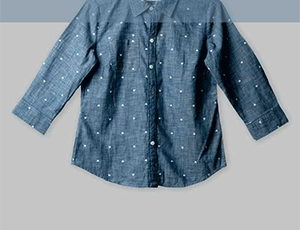Do clothes shrink in the dryer? In short, yes. However, this can sometimes be beneficial.
Most people hate shrinking and do whatever they can to prevent their clothes from shrinking. But, sometimes it can come in handy. Whether you hope to get a more fashionable look, want a shrink fabric for a craft project, or experiment with some old garments, learning how to shrink your clothes is a simple process. trendwizz.com has discussed some methods for shrinking clothes effectively.
Other Topics You Might Like
Helpful Products You Might Like

Bounce Anti-Static Spray

Bissell Professional Spot and Stain Cleaner

Downy Infusions Liquid Fabric Softener
"(Paid Links)" 
Understanding Fabric Types
First of all, know about the fabric type before you choose any step for shrinking the cloth. All fabrics respond differently to heat and water.
Cotton
cotton is susceptible to shrinking. It can shrink immediately when you use hot water or dry it at high heat.

Wool

Wool can also shrink; exposing it to hot water makes it stiff and shrank.
Polyester
Polyester is a synthetic fabric that is less prone to shrinking than natural fibers. However, it can still shrink if exposed to high temperatures.

Choose the right technique to shrink
If you want to shrink a shirt, there are many techniques for completing the same task. Different fabrics have different conditions, and some are more prone to damage due to their senstivity.
Such as, a cotton t-shirt, which could experience moderate shrinkage when laundered, or a wool sweater, which might shrink significantly to the point of becoming unwearable or transforming into a solid mass of felted fabric! Before shrinking your garments, ensure that you employ the correct method to achieve the desired outcomes.
Turn up the heat
Though every type of fabric behaves differently, heat shrinks most, if not all, types of fabric. For example, cotton shirts and denim jeans will shrink more in a warm or hot wash followed by a high-heat drying cycle.
Steam heat effectively shrinks wool clothes; some fabrics shrink when soaked in warm water for long periods. Agitation can also help, but it may not be suitable for all fabrics.
Before you try a shrinking technique, double-check to ensure that it won’t cause your material to fade, feel, or become damaged.
Go Slow
It's essential to keep in mind that shrinking clothes is not a quick process, and that might be for the best! Ensuring your clothing and fabrics don't shrink too much requires patience and careful monitoring to guarantee a slow and even shrinking process. If you're using a washer and dryer to shrink clothes, it's important to regularly check on your garment. This is especially crucial if you're using a high-heat dryer cycle. As a general guideline, remember to take out your garment every five minutes or so to ensure everything is progressing as expected.
After you have reduced the size of your clothes to your desired size, take them off the heat and hang them up to dry in the air. If the garment is very wet, place it on a towel, roll it up, and then gently press down on it – but avoid wringing or squeezing – to remove excess moisture. Then, hang the garment in a cool area away from direct sunlight to stop it from shrinking further.
Conclusion
Understanding fabric types is crucial when intentionally shrinking clothes. This can be achieved by using hot water and high heat, while carefully monitoring the process to prevent over-shrinking. By following these techniques and precautions, you can effectively modify the size of your garments and achieve a better fit. Always keep in mind the properties of the fabric and handle it with care to avoid damage.
